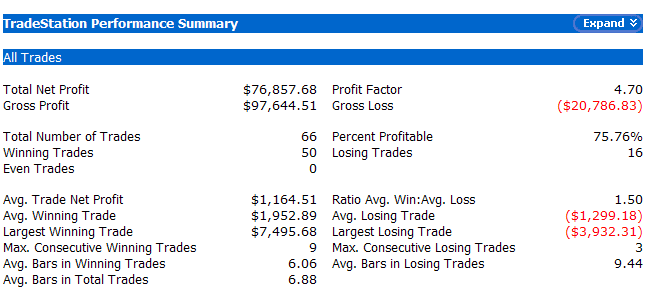The CBI has begun to wake up this past week. For those new to the blog CBI stands for Capitulative Breadth Indicator. An introduction to it is
here. A list of posts
here. Completely dormant since dropping to “0” on March 24th, it has perked up in the last week and reached “5” today. “5” is the first level where I normally begin to pay attention. First I’ll show some raw numbers and then I’ll offer a few thoughts.
Generally the higher the CBI the higher the percentage of qualifying large-cap stocks that are undergoing extreme selling and likely to bounce. When you get a broad group of stocks primed to bounce, it usually hints at a market that is likely to bounce as well. A CBI trade normally consists of entering an index position when the CBI hits a certain threshold (5, 7, and 10 are the ones I typically look at) and exiting when it returns to a neutral state, normally defined as a reading of 3 or lower.
Below is a performance report showing what would have occurred had you bought the S&P 500 whenever the CBI hit 5 and then sold when it returned to 3 or lower. It goes from January 1995 to present and does not include dividends, commissions, or slippage. All trades were executed at the 4pm close and assume $100,000 per trade.

As you can see, even a CBI of 5 can provide the tools for a pretty robust system. I don’t typically use a 5 as a reason to go long, though. I do use it as a reason to avoid entering new short positions and tightening stops on old ones. I prefer to save most of my ammo for more significant cluster sizes like 7 or 10 depending on my overall market outlook.
Recent action for a 5 reading has been sub-par. Four of the last five occurrences, dating back to July 2007, have been losers. Prior to that, from April of 2005 through June of 2007, there were 11 trades – 10 of which were winners. A possible reason for this is that the recent period has seen much more severe selloffs. The mid-2005 through mid-2007 period saw mostly shallow pullbacks.
My current market analysis suggests patience. I’d rather wait for a higher reading before becoming too aggressive. On the other hand, the moves up can be quick and powerful so I wouldn’t want to be caught short right now either. This particular indicator does indicate a short-term upside edge.
